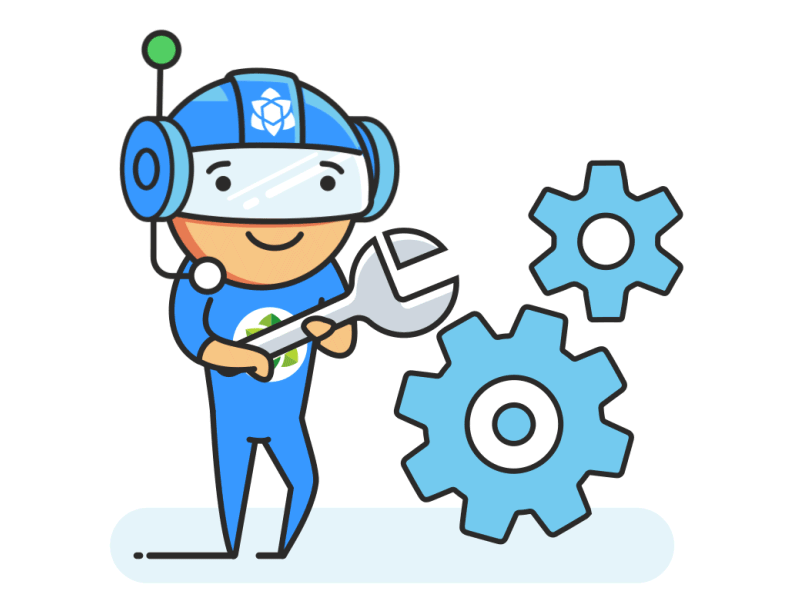
Continuing education in engineering
Institution of Engineers (India)
The Institution of Engineers (India) conducts examination twice in a year for the student members of the institution. The Institution opens door for both diploma holders and 12 th students who have passed in Mathematics, Physics and Chemistry. Those who are interested can enroll for membership and become eligible for appearing exam. The program is recognised by UGC , AICTE and Government of India and is equal to graduation in engineering. Those who successfully passed are eligible for jobs in government and public and private sectors. They are also eligible for post graduate program in IIT, NIT, state government universities and private deemed universities in India.
Institution of Mechanical Engineers
The Institution of Mechanical Engineers offer engineering program for those interested for acquiring diploma and degree certificate in engineering.
The Institution of Mechanical Engineers conducts examination twice in a year for students members. Those who passed tenth standard can write examination for the diploma stream and qualify themselves to become a diploma holder in mechanical engineering.


Birla Institue of Technology and Science (BITS Pilani)
BITS Pilani offers B.E and M.Tech courses in science and engineering from certificate level to post graduate level. Their courses are recognised by UGC since it is deemed University.
Energy Manager and Energy Auditor Exams
The essential qualification for a Certified Energy Manager and Certified Energy Auditor would be the passing of a National Level Certification Examination, which will be conducted under the aegis of Bureau of Energy Efficiency. The national level certification examination, conducted by a National Certifying Agency, will establish a uniform criterion for the certification of Energy Managers/Energy Auditors and will also ensure that services of qualified persons, having the requisite knowledge on the subject, are available to the industry.

IRD Mechanalysis Vibration Analysis
IRD Mechanalysis Ltd. offers Vibration Condition Monitoring Training in accordance with ISO 18436-2. The training is compliant to the requirements of ISO 18436-2 & ISO/IEC 17024.
The program consist of Category – I, II, III & IV for the people in the industry depending upon their experience.

American Society for Quality ( ASQ)
ASQ Certifications are recognized as a mark of quality excellence in many industries. ISO 17024 accreditation adds additional credibility and value to ASQ Certification, & accredited certifications as follows
1.Certified Manager of Quality/Organizational Excellence (CMQ/OE)
2.Certified Quality Auditor (CQA)
3.Certified Quality Engineer (CQE)
4.Certified Reliability Engineer (CRE)
5.Certified Six Sigma Black Belt (CSSBB)
The Institution of Quality Engineers (India)
The Institution of Quality Engineers (India) is registered as Educational Trust under Government of India, devoted to vocational education in specific disciplines of quality engineering, welding inspection and engineering, N.D.T. Training, quality assurance and quality control engineering.
They offer certificate programs for the following
1. Certified NDT Engineer
2. Certified Quality Engineer
3. Certified Quality Manager
They also offer certification program in
1. Sig sigma green belt
2. Six sigma black belt
3. ASQ certification
4. Certified Reliability Engineer
Skill development Data Science (Tableau Python R Julia ) Big Data ( NoSQL MangoDB Hadoop)
Data science combines math and statistics, specialized programming, advanced analytics, artificial intelligence (AI), and machine learning with specific subject matter expertise to uncover actionable insights hidden in an organization’s data. These insights can be used to guide decision making and strategic planning.
The accelerating volume of data sources, and subsequently data, has made data science is one of the fastest growing field across every industry. As a result, it is no surprise that the role of the data scientist was dubbed the “sexiest job of the 21st century” by Harvard Business Review (link resides outside of IBM). Organizations are increasingly reliant on them to interpret data and provide actionable recommendations to improve business outcomes.
The data science lifecycle involves various roles, tools, and processes, which enables analysts to glean actionable insights. Typically, a data science project undergoes the following stages:
Data ingestion: The lifecycle begins with the data collection–both raw structured and unstructured data from all relevant sources using a variety of methods. These methods can include manual entry, web scraping, and real-time streaming data from systems and devices. Data sources can include structured data, such as customer data, along with unstructured data like log files, video, audio, pictures, the Internet of Things (IoT), social media, and more.
Data storage and data processing: Since data can have different formats and structures, companies need to consider different storage systems based on the type of data that needs to be captured. Data management teams help to set standards around data storage and structure, which facilitate workflows around analytics, machine learning and deep learning models. This stage includes cleaning data, deduplicating, transforming and combining the data using ETL (extract, transform, load) jobs or other data integration technologies. This data preparation is essential for promoting data quality before loading into a data warehouse, data lake repository.
Data analysis: Here, data scientists conduct an exploratory data analysis to examine biases, patterns, ranges, and distributions of values within the data. This data analytics exploration drives hypothesis generation for a/b testing. It also allows analysts to determine the data’s relevance for use within modeling efforts for predictive analytics, machine learning, and/or deep learning. Depending on a model’s accuracy, organizations can become reliant on these insights for business decision making, allowing them to drive more scalability.
Communicate: Finally, insights are presented as reports and other data visualizations that make the insights—and their impact on business—easier for business analysts and other decision-makers to understand. A data science programming language such as R or Python includes components for generating visualizations; alternately, data scientists can use dedicated visualization tools.
Big data analytics is the use of advanced analytic techniques against very large, diverse big data sets that include structured, semi-structured and unstructured data, from different sources, and in different sizes from terabytes to zettabytes.
What is big data exactly? It can be defined as data sets whose size or type is beyond the ability of traditional relational databases to capture, manage and process the data with low latency. Characteristics of big data include high volume, high velocity and high variety. Sources of data are becoming more complex than those for traditional data because they are being driven by artificial intelligence (AI), mobile devices, social media and the Internet of Things (IoT). For example, the different types of data originate from sensors, devices, video/audio, networks, log files, transactional applications, web and social media — much of it generated in real time and at a very large scale.
With big data analytics, you can ultimately fuel better and faster decision-making, modelling and predicting of future outcomes and enhanced business intelligence. As you build your big data solution, consider open source software such as Apache Hadoop, Apache Spark and the entire Hadoop ecosystem as cost-effective, flexible data processing and storage tools designed to handle the volume of data being generated today.
Big data defined
What exactly is big data?
The definition of big data is data that contains greater variety, arriving in increasing volumes and with more velocity. This is also known as the three Vs.
Put simply, big data is larger, more complex data sets, especially from new data sources. These data sets are so voluminous that traditional data processing software just can’t manage them. But these massive volumes of data can be used to address business problems you wouldn’t have been able to tackle before.The three Vs of big data
Volume The amount of data matters. With big data, you’ll have to process high volumes of low-density, unstructured data. This can be data of unknown value, such as Twitter data feeds, clickstreams on a web page or a mobile app, or sensor-enabled equipment. For some organizations, this might be tens of terabytes of data. For others, it may be hundreds of petabytes.
Velocity Velocity is the fast rate at which data is received and (perhaps) acted on. Normally, the highest velocity of data streams directly into memory versus being written to disk. Some internet-enabled smart products operate in real time or near real time and will require real-time evaluation and action.
Variety Variety refers to the many types of data that are available. Traditional data types were structured and fit neatly in a relational database. With the rise of big data, data comes in new unstructured data types. Unstructured and semistructured data types, such as text, audio, and video, require additional preprocessing to derive meaning and support metadata.
Big data benefits:
Big data makes it possible for you to gain more complete answers because you have more information.
More complete answers mean more confidence in the data—which means a completely different approach to tackling problems.
Companies like Netflix and Procter & Gamble use big data to anticipate customer demand. They build predictive models for new products and services by classifying key attributes of past and current products or services and modeling the relationship between those attributes and the commercial success of the offerings. In addition, P&G uses data and analytics from focus groups, social media, test markets, and early store rollouts to plan, produce, and launch new products.
Predictive maintenance Factors that can predict mechanical failures may be deeply buried in structured data, such as the year, make, and model of equipment, as well as in unstructured data that covers millions of log entries, sensor data, error messages, and engine temperature. By analyzing these indications of potential issues before the problems happen, organizations can deploy maintenance more cost effectively and maximize parts and equipment uptime.
Customer experience The race for customers is on. A clearer view of customer experience is more possible now than ever before. Big data enables you to gather data from social media, web visits, call logs, and other sources to improve the interaction experience and maximize the value delivered. Start delivering personalized offers, reduce customer churn, and handle issues proactively.
Machine learning is a hot topic right now. And data—specifically big data—is one of the reasons why. We are now able to teach machines instead of program them. The availability of big data to train machine learning models makes that possible.
Operational efficiency Operational efficiency may not always make the news, but it’s an area in which big data is having the most impact. With big data, you can analyze and assess production, customer feedback and returns, and other factors to reduce outages and anticipate future demands. Big data can also be used to improve decision-making in line with current market demand.
Drive innovation Big data can help you innovate by studying interdependencies among humans, institutions, entities, and process and then determining new ways to use those insights. Use data insights to improve decisions about financial and planning considerations. Examine trends and what customers want to deliver new products and services. Implement dynamic pricing. There are endless possibilities.
NoSQL, also referred to as “not only SQL”, “non-SQL”, is an approach to database design that enables the storage and querying of data outside the traditional structures found in relational databases. While it can still store data found within relational database management systems (RDBMS), it just stores it differently compared to an RDBMS. The decision to use a relational database versus a non-relational database is largely contextual, and it varies depending on the use case.
Instead of the typical tabular structure of a relational database, NoSQL databases, house data within one data structure, such as JSON document. Since this non-relational database design does not require a schema, it offers rapid scalability to manage large and typically unstructured data sets.
NoSQL is also type of distributed database, which means that information is copied and stored on various servers, which can be remote or local. This ensures availability and reliability of data. If some of the data goes offline, the rest of the database can continue to run.
Today, companies need to manage large data volumes at high speeds with the ability to scale up quickly to run modern web applications in nearly every industry. In this era of growth within cloud, big data, and mobile and web applications, NoSQL databases provide that speed and scalability, making it a popular choice for their performance and ease of use
NoSQL provides other options for organizing data in many ways. By offering diverse data structures, NoSQL can be applied to data analytics, managing big data, social networks, and mobile app development.
A NoSQL database manages information using any of these primary data models:
Key-value store
This is typically considered the simplest form of NoSQL databases. This schema-less data model is organized into a dictionary of key-value pairs, where each item has a key and a value. The key could be like something similar found in a SQL database, like a shopping cart ID, while the value is an array of data, like each individual item in that user’s shopping cart. It’s commonly used for caching and storing user session information, such as shopping carts. However, it’s not ideal when you need to pull multiple records at a time. Redis and Memcached are examples of an open-source key-value databases.
Document store
As suggested by the name, document databases store data as documents. They can be helpful in managing semi-structured data, and data are typically stored in JSON, XML, or BSON formats. This keeps the data together when it is used in applications, reducing the amount of translation needed to use the data. Developers also gain more flexibility since data schemas do not need to match across documents (e.g. name vs. first_name). However, this can be problematic for complex transactions, leading to data corruption. Popular use cases of document databases include content management systems and user profiles. An example of a document-oriented database is MongoDB, the database component of the MEAN stack.
Want to know more about MongoBD? Check out the IBM tutorial on getting started with using IBM Cloud Databases for MongoDB.
Wide-column store
These databases store information in columns, enabling users to access only the specific columns they need without allocating additional memory on irrelevant data. This database tries to solve for the shortcomings of key-value and document stores, but since it can be a more complex system to manage, it is not recommended for use for newer teams and projects. Apache HBase and Apache Cassandra are examples of open-source, wide-column databases. Apache HBase is built on top of Hadoop Distributed Files System that provides a way of storing sparse data sets, which is commonly used in many big data applications. Apache Cassandra, on the other hand, has been designed to manage large amounts of data across multiple servers and clustering that spans multiple data centers. It’s been used for a variety of use cases, such as social networking websites and real-time data analytics.
Graph store
This type of database typically houses data from a knowledge graph. Data elements are stored as nodes, edges and properties. Any object, place, or person can be a node. An edge defines the relationship between the nodes. For example, a node could be a client, like IBM, and an agency like, Ogilvy. An edge would be categorize the relationship as a customer relationship between IBM and Ogilvy.
Graph databases are used for storing and managing a network of connections between elements within the graph. Neo4j (link resides outside IBM), a graph-based database service based on Java with an open-source community edition where users can purchase licenses for online backup and high availability extensions, or pre-package licensed version with backup and extensions included.
In-memory store
With this type of database, like IBM solidDB, data resides in the main memory rather than on disk, making data access faster than with conventional, disk-based databases.
